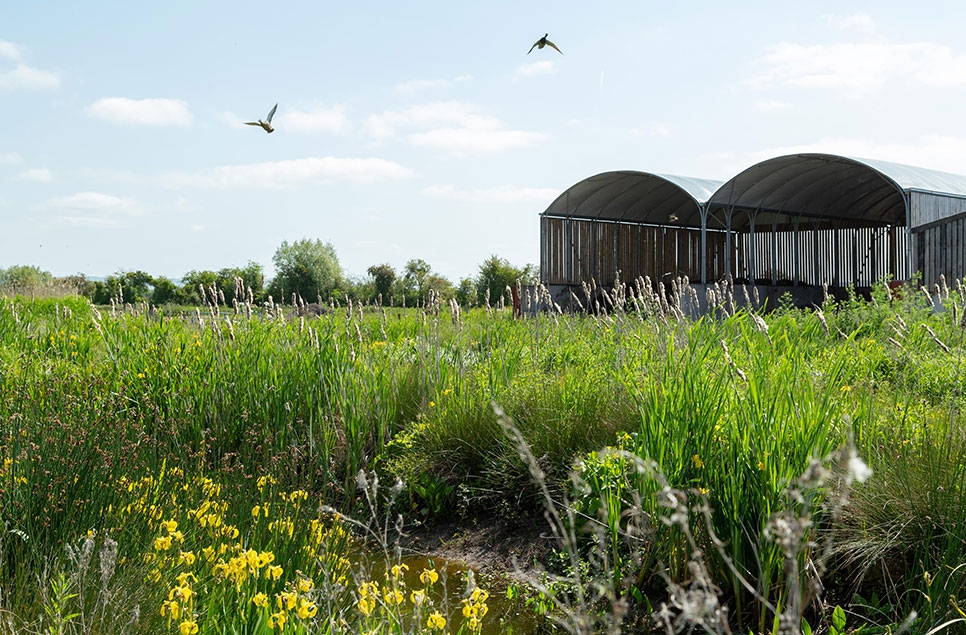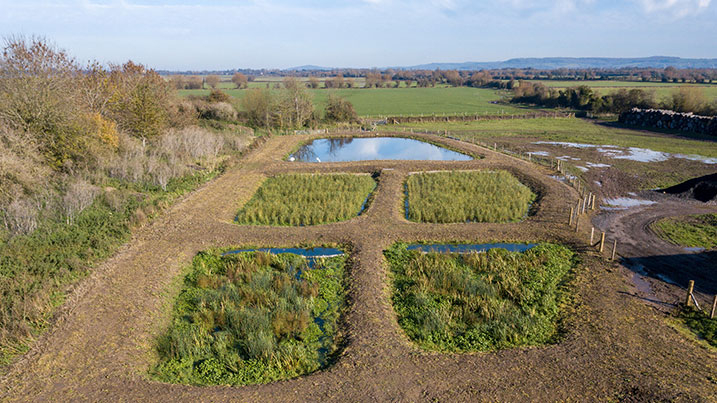We’re in a water quality crisis: Let’s use wetlands to help us fix it!
This week, we published our new Wetlands for Water Quality route map which sets out how the UK can unlock the super powers of wetlands to help clean our water and address the water quality crisis.

The report, which follows the publication of our route maps on urban wetlands for wellbeing and wetlands for carbon storage, part of a wider Blue Recovery push to create 100,000 more hectares wetlands to support the health and wellbeing of the nation, and the planet.
What’s the current state of UK water quality?
Water pollution reaching all corners of the UK, and with only 14% of English rivers deemed to be in good health1 this is no surprise. The UK is consistently ranked among the worst countries in Europe for water quality.2
Water pollution mostly comes from agriculture and water companies, as well as urban development and other industries. Last year, raw sewage was discharged into our waterways 300,000 times.3
This has devastating impacts on nature, wildlife and people, It can cause sickness in people while leading to death and reduced fertility in animals.
Since 1970, there has been an 84% decline in freshwater species and 10% are facing extinction.4 Barely a day goes by when water quality is not in the headlines and a hot topic online. And rightly so.
But it doesn’t have to be this way. We can act now to turn the tide and protect our waterways.
Where do wetlands come in?
Greater regulation and monitoring is urgently needed to stop pollution entering our waterways, but we can also use wetlands to help clean UK waters up now. Treatment wetlands are engineered wetlands that absorb damaging pollutants (like nutrients, heavy metals and chemicals). They are designed to maximise the natural water cleaning properties of wetlands. This means they can clean our water effectively.

Treatment wetlands not only provide low cost, low maintenance water treatment, but they also bring a host of co-benefits: they can improve our flood resilience, reduce emissions and store carbon, boost biodiversity and provide health and wellbeing benefits too.
WWT is already working with organisations to unlock the powers of treatment wetlands and we want to support even more people to employ these amazing nature-based solutions to protect the environment against pollutants.
Last week, we took some of our Blue Recovery Leaders Group members for a tour of the treatment wetland centre at WWT Slimbridge and shared a sneak preview of the ‘Wetlands for Water Quality’ route map with members from The Crown Estate, Natural England and Invesco learning more about how treatment wetlands work, the biodiversity benefits and how they might benefit from employing these nature-based solutions on their sites.
Treatment wetlands like these are a brilliant start, but we need to see these wetlands created on a larger scale across a range of sectors.
Unlocking a Blue Recovery
The water quality crisis shows little sign of slowing and we need to act now if we hope to address the scale of the challenge and protect people and wildlife. The benefits of wetlands are well-documented, we know how to create and manage them and organisations and businesses are wising up to wetlands as a solution to some of society’s most pressing problems – including poor water quality. But we need to see cross-industry action now. We want to see a world where wetlands line our roads, are integrated into housing developments, treat our sewage and are adopted by farmers across the UK.
We also need politicians to play their part in meeting legally-binding environmental commitments and achieving a blue recovery. The UK Government must act now to facilitate and accelerate wider investment in treatment wetlands. This will help us reach our biodiversity and water quality targets, as set out earlier this year in the Environmental Improvement Plan.5
We are calling on the Government to:
- Build confidence in regulators and investors by establishing a pilot scheme for treatment wetlands in the UK by 2025
- Make treatment wetlands the default option for meeting nutrient neutrality targets
- Establish and develop an effective market in nutrient trading and offsetting by creating a nutrient offsetting code
Find out more about our vision for treatment wetlands in the UK and how, together, we can create more by reading our ‘Wetlands for Water Quality’ route map.
Help us push for 100,000 more hectares of wetlands in the UK by adding your name to our Wetlands Can pledge today.
Sign the pledge2 https://www.sas.org.uk/water-quality/water-quality-facts-and-figures/
3 https://riveractionuk.com/charter-for-rivers/
5 https://www.gov.uk/government/publications/environmental-improvement-plan
Emma Pollitt
Policy & Advocacy Officer



